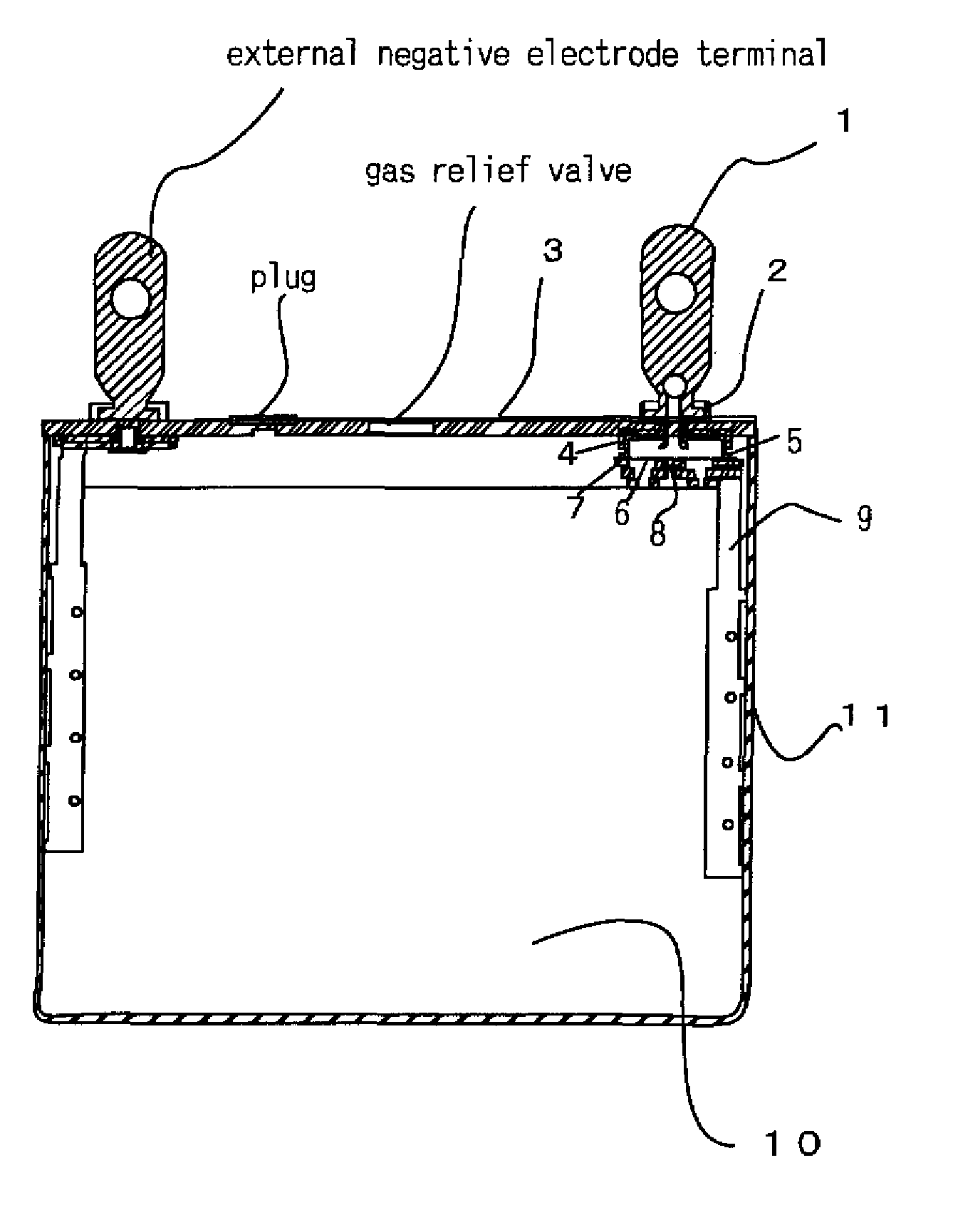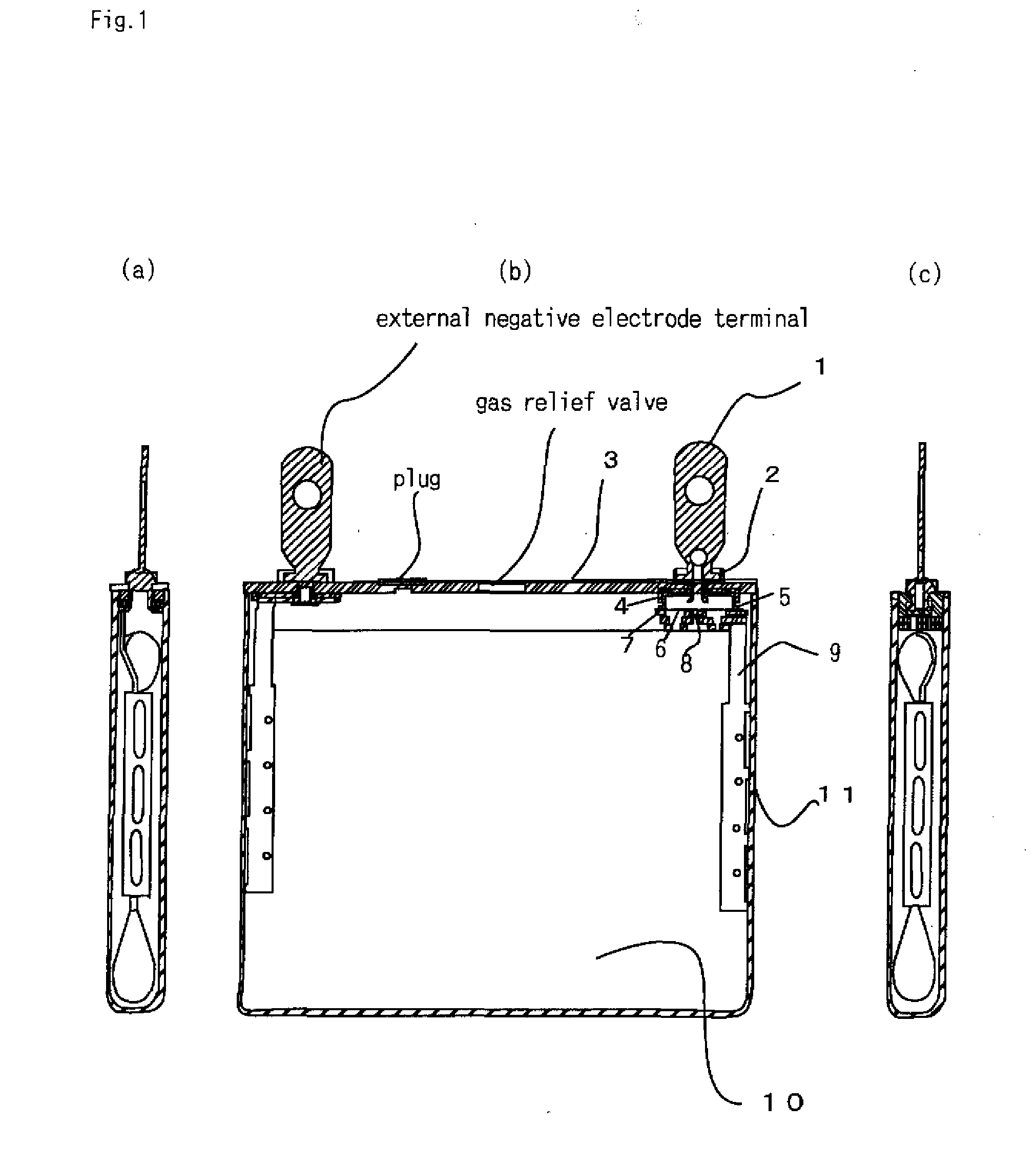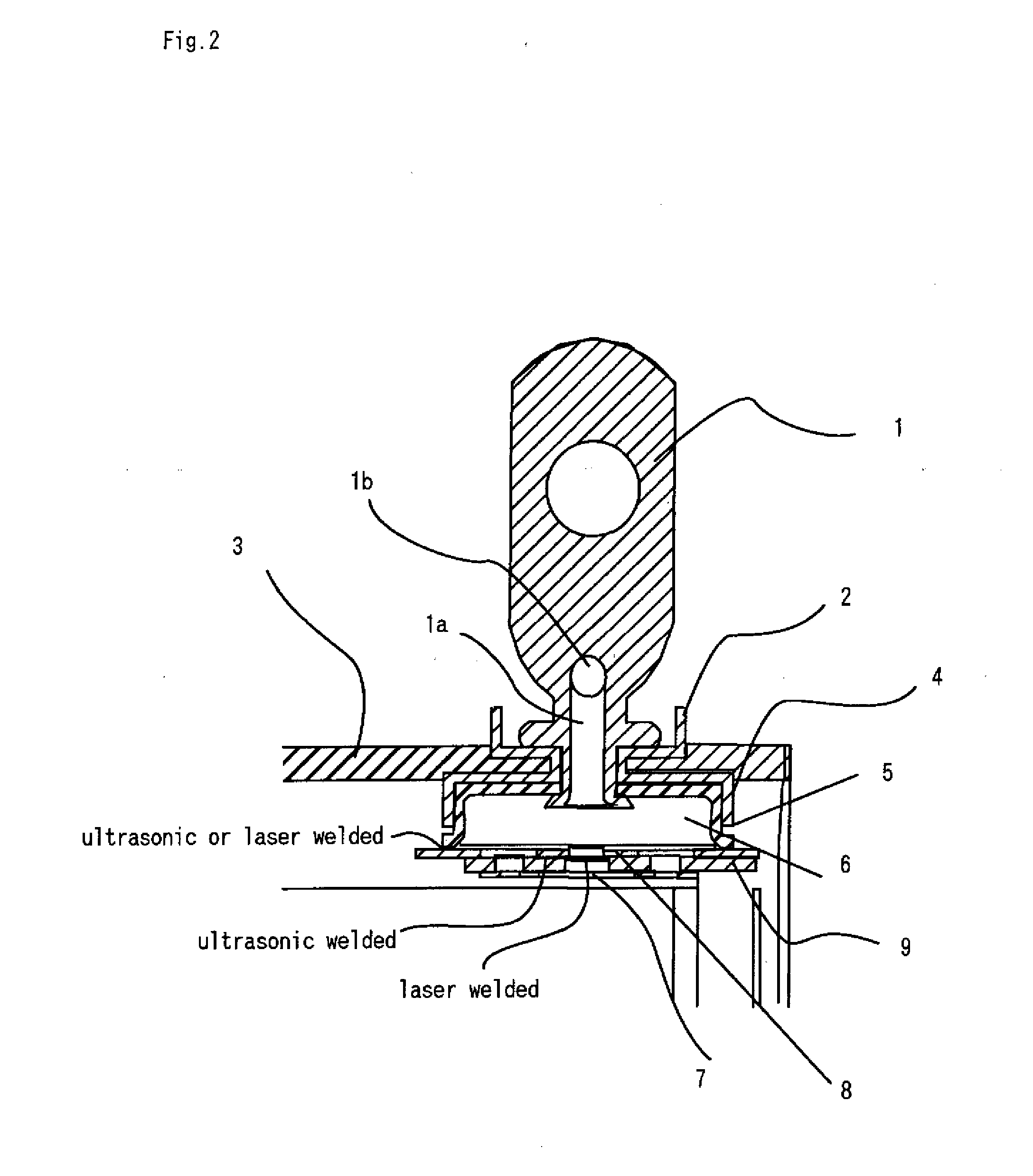Non-aqueous electrolyte secondary cell
a secondary battery and electrolyte technology, applied in the direction of cell components, sustainable manufacturing/processing, final product manufacturing, etc., can solve the problems of prone to malfunction, current interrupting mechanism, etc., and achieve the effect of efficient series connection
- Summary
- Abstract
- Description
- Claims
- Application Information
AI Technical Summary
Benefits of technology
Problems solved by technology
Method used
Image
Examples
first embodiment
[0076]FIGS. 1A-1C are sectional views of a battery according to a first embodiment; FIG. 2 is an enlarged sectional view of an essential part of the battery; FIG. 3 is an exploded perspective view of the battery; FIGS. 4A and 4B show the operation of the diaphragm of the battery; FIGS. 5A-5C show a current collecting tab holder of the battery; and FIG. 6 is another enlarged sectional view of the essential part of the battery.
[0077] As shown in FIGS. 1A-1C, the battery of the first embodiment includes an outer can 11 and a coiled electrode assembly 10 housed in the outer can 11 laterally to the can axis. The electrode assembly 10 comprises positive and negative electrodes coiled together. The outer can 11 is sealed with a sealing plate 3 having a gas relief valve. The sealing plate 3 has an external positive electrode terminal 1 and an external negative electrode terminal projecting outside the battery therefrom.
[0078] As shown in FIG. 3, the electrode assembly 10 has positive-elec...
second embodiment
[0100] Another structure of the battery of the present invention is shown in FIGS. 7 and 8.
[0101]FIG. 7 is a front view of the entire battery according to the second embodiment, and FIG. 8 is an enlarged right side view of an essential part of the battery shown in FIG. 7.
[0102] As shown in FIG. 7, in the battery of the second embodiment, the sealing plate 3 from which the external electrode terminal 1 projects is provided with a projection 12 projecting toward the outside of the battery. The projection 12 accommodates one end (the bottom side) of the external electrode terminal 1 in its inner space and allows the other end or the top side of the external electrode terminal 1 to project to the outside of the battery. The bottom-side end of the external electrode terminal 1 is swaged as shown in FIG. 8 so as to fix the external electrode terminal 1 to the sealing plate 3.
[0103] In FIG. 7, the numeral 13 indicates a space used to provide electrical components or gas passages; the nu...
PUM
| Property | Measurement | Unit |
|---|---|---|
| frequency | aaaaa | aaaaa |
| acceleration | aaaaa | aaaaa |
| acceleration | aaaaa | aaaaa |
Abstract
Description
Claims
Application Information
 Login to View More
Login to View More - R&D
- Intellectual Property
- Life Sciences
- Materials
- Tech Scout
- Unparalleled Data Quality
- Higher Quality Content
- 60% Fewer Hallucinations
Browse by: Latest US Patents, China's latest patents, Technical Efficacy Thesaurus, Application Domain, Technology Topic, Popular Technical Reports.
© 2025 PatSnap. All rights reserved.Legal|Privacy policy|Modern Slavery Act Transparency Statement|Sitemap|About US| Contact US: help@patsnap.com



